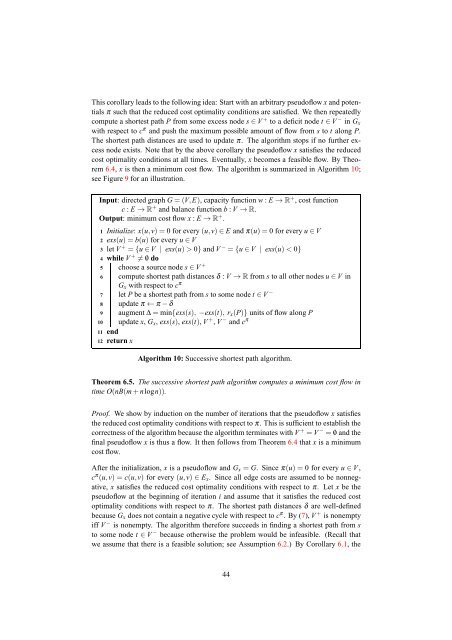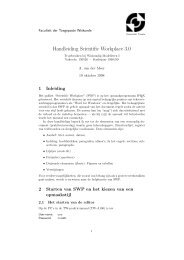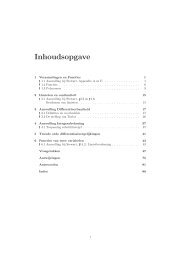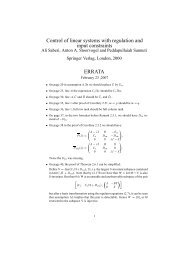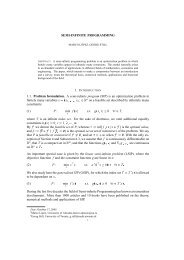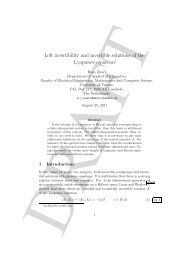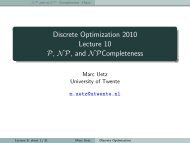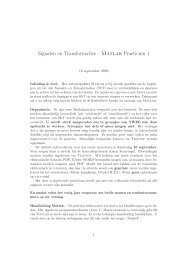Lecture Notes Discrete Optimization - Applied Mathematics
Lecture Notes Discrete Optimization - Applied Mathematics
Lecture Notes Discrete Optimization - Applied Mathematics
You also want an ePaper? Increase the reach of your titles
YUMPU automatically turns print PDFs into web optimized ePapers that Google loves.
This corollary leads to the following idea: Start with an arbitrary pseudoflow x and potentials<br />
π such that the reduced cost optimality conditions are satisfied. We then repeatedly<br />
compute a shortest path P from some excess node s∈ V + to a deficit node t ∈ V − in G x<br />
with respect to c π and push the maximum possible amount of flow from s to t along P.<br />
The shortest path distances are used to update π. The algorithm stops if no further excess<br />
node exists. Note that by the above corollary the pseudoflow x satisfies the reduced<br />
cost optimality conditions at all times. Eventually, x becomes a feasible flow. By Theorem<br />
6.4, x is then a minimum cost flow. The algorithm is summarized in Algorithm 10;<br />
see Figure 9 for an illustration.<br />
Input: directed graph G=(V,E), capacity function w : E →R + , cost function<br />
c : E →R + and balance function b : V →R.<br />
Output: minimum cost flow x : E →R + .<br />
1 Initialize: x(u,v)=0 for every(u,v)∈E and π(u)= 0 for every u∈ V<br />
2 exs(u)=b(u) for every u∈ V<br />
3 let V + ={u∈ V | exs(u)>0} and V − ={u∈ V | exs(u)


